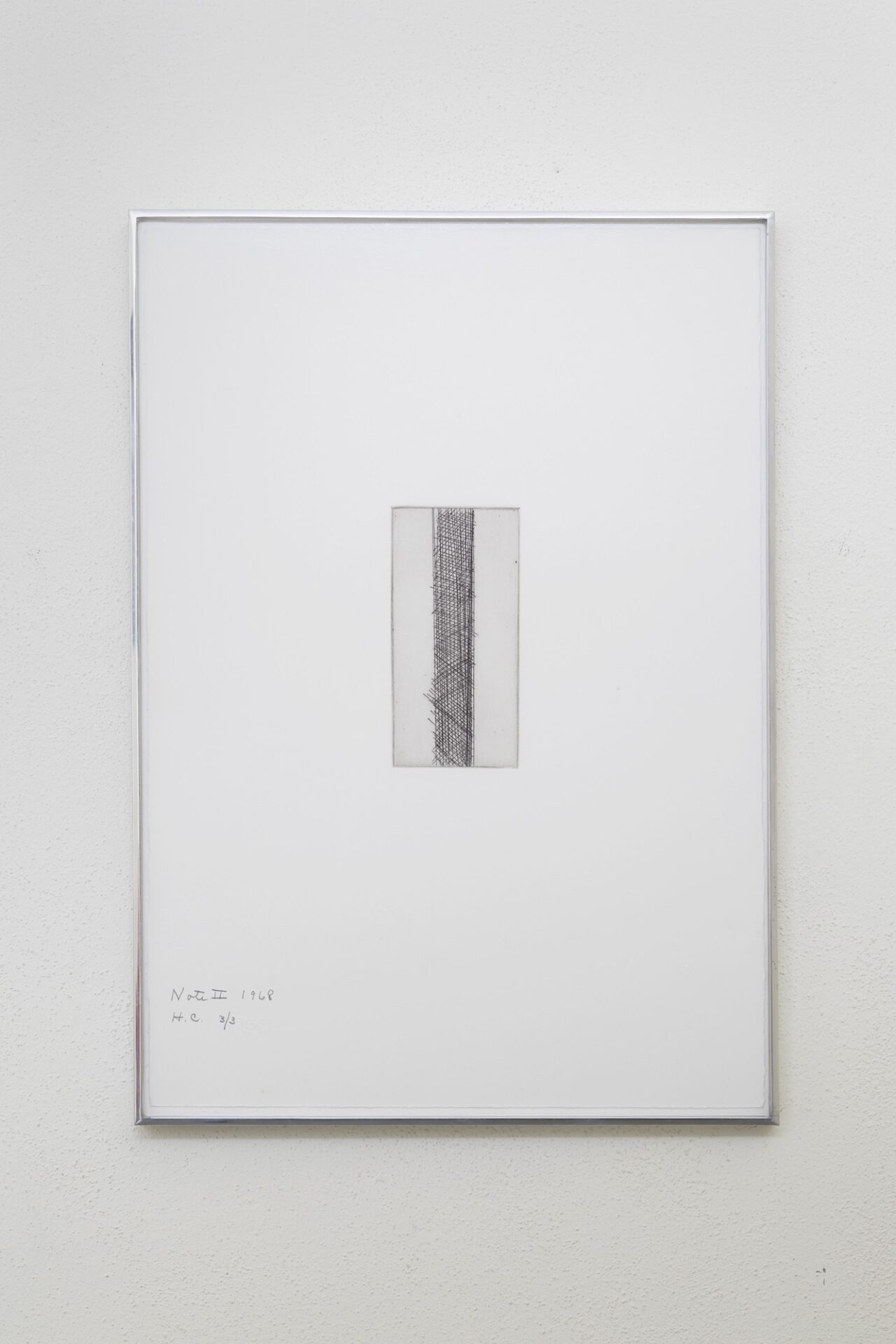Barnett Newman, born Baruch Newman in New York, studied at the Art Students League and had his first solo exhibition at Betty Parsons Gallery, New York, in 1948. In 1959, Donald Judd attended Newman’s exhibition at French & Company, New York, the largest exhibition of his work to date, with twenty-nine paintings. Meyer Schapiro, the influential art critic, historian, and professor, had asked all of his students at Columbia University, of which Judd was one, to attend the exhibition. Judd and Newman became friends at the end of 1964, around the time that Judd wrote his first essay on Newman’s work.
Notes represents Newman’s unedited first experiments in etching, in which he approached the process of engraving the plates as a form of drawing.1 In his initial essay on Newman, Judd called Newman the “best painter in this country” and remarked upon the “openness” and sense of “wholeness” in Newman’s work:
If forms run to the edges to imply a continuum, the painting is a segment of that continuum, which isn’t true of Newman’s paintings. They are whole and aren’t part of another whole. There is no implication that the parts extend beyond the edges, just as there is none that they occur within the edges. Everything is specifically where it is. . . . The openness of Newman’s work is concomitant with chance and one person’s knowledge; the work doesn’t suggest a great scheme of knowledge; it doesn’t claim more than anyone can know; it doesn’t imply a social order.2
This approach can also be seen in Newman’s prints, for which Judd planned to create a permanent installation at the Chinati Foundation.3 The Chinati Foundation presented the temporary exhibition, Barnett Newman: Notes, from October 8 to November 15, 1993.
Judd installed another work by Newman in the Architecture Studio, a lithograph from 1964.
